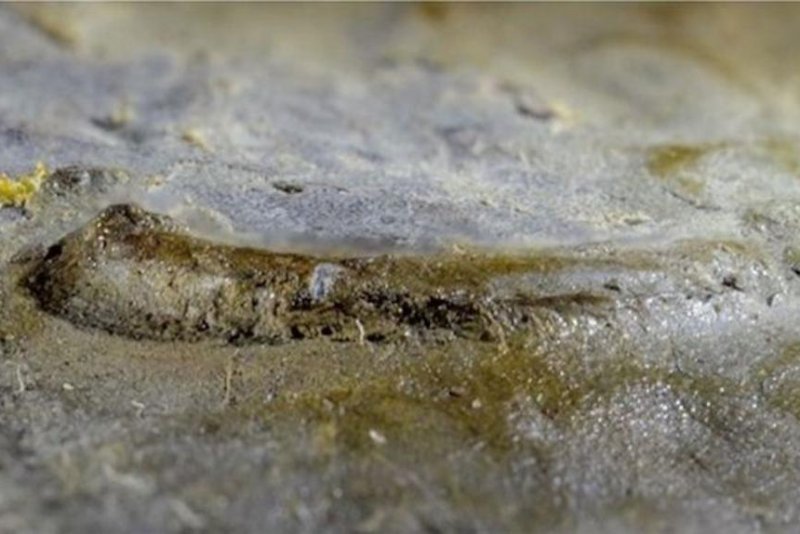A side view of the world's oldest eye. The fossil was found in Estonia. Photo by Gennadi Baranov
Dec. 7 (UPI) -- Scientists at the University of Edinburgh in Scotland believe they've found the world's oldest eye.
The 530 million-year-old fossil eye belonged to an ancient extinct sea creature named Schmidtiellus reetae. The eye looks like an early version of the type of eye deployed by a number of modern animals, including crabs, bees and dragonflies.
Scientists discovered the ancient eye in Estonia. Because it is partially worn away, paleontologists were able to look directly inside the organ, revealing the eye's structure and inner workings.
The eye recalls a primitive version of a modern compound eye, featuring an array of ommatidia, which are tiny light-sensitive cells. Its resemblance to the eyes of bees suggests eye evolution hasn't drastically changed over the last 500 million years.
Scientists' analysis of the eye -- detailed this week in the journal PNAS -- suggests the early marine creature had relatively poor version compared to modern animals, but was able to see encroaching predators and pick out obstacles as it navigated the shallows.
"This exceptional fossil shows us how early animals saw the world around them hundreds of millions of years ago," Edinburgh professor Euan Clarkson said in a news release. "Remarkably, it also reveals that the structure and function of compound eyes has barely changed in half a billion years."
The early eye featured fewer ommatidia, just 100 cells, than today's eyes, and they were spaced farther apart than they are in the eyes of modern animals.
The Edinburgh researchers were assisted by scientists from University of Cologne in Germany and the Tallinn University of Technology in Estonia.
During their fossil survey of the Baltic region, they discovered another ancient -- but more capable -- eye. The discovery revealed advances in visual resolution just a few million years later.
Scientists say its unlikely they'll be able to find an intact eye older than the one they unearthed in Estonia.
"This may be the earliest example of an eye that it is possible to find," said Cologne professor Brigitte Schoenemann. "Older specimens in sediment layers below this fossil contain only traces of the original animals, which were too soft to be fossilised and have disintegrated over time."















